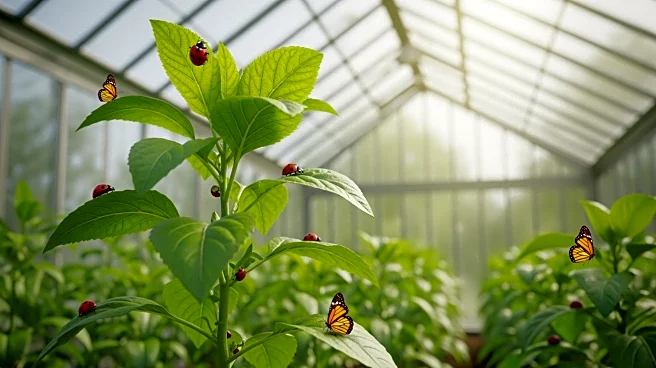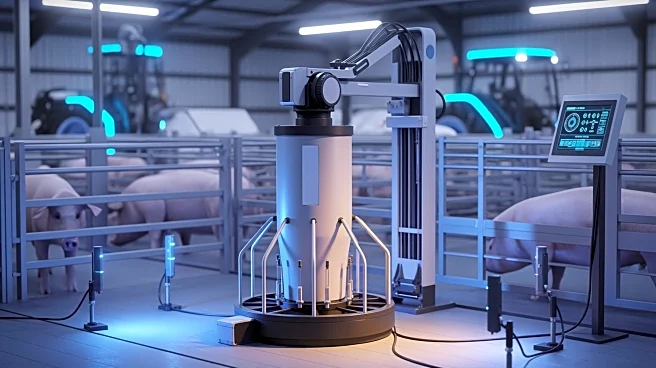What's Happening?
The agriculture nets market in the U.S. and Japan is experiencing significant growth, driven by the increasing demand for crop protection solutions. The market, valued at USD 11.82 billion in 2024, is projected
to reach approximately USD 19.38 billion by 2033, with a compound annual growth rate (CAGR) of around 5.65%. Recent product launches in the U.S. include UV-resistant shade nets and insect-repellent nets, while Japan has introduced netting systems for urban farming and AI-enabled microclimate monitoring nets. Mergers and acquisitions, such as a U.S. manufacturer acquiring a tech startup for IoT-enabled smart nets, are also shaping the market landscape.
Why It's Important?
The growth in the agriculture nets market is crucial for enhancing crop protection and supporting sustainable farming practices. The introduction of innovative products like biodegradable nets and smart shading systems addresses environmental concerns and promotes eco-friendly agriculture. This trend is likely to benefit farmers by reducing dependency on pesticides and improving crop yields. Additionally, government approvals and subsidies for advanced netting solutions in both countries highlight the importance of these technologies in national agricultural policies, potentially leading to increased adoption and further market expansion.
What's Next?
Future developments in the agriculture nets market may include further integration of advanced technologies such as AI and IoT for enhanced crop monitoring and protection. Continued investment in research and development is expected to drive innovation, leading to more efficient and sustainable netting solutions. Stakeholders, including government bodies and private investors, are likely to continue supporting these advancements through funding and policy initiatives, which could accelerate the adoption of smart agriculture nets and contribute to the overall growth of the agriculture sector.












